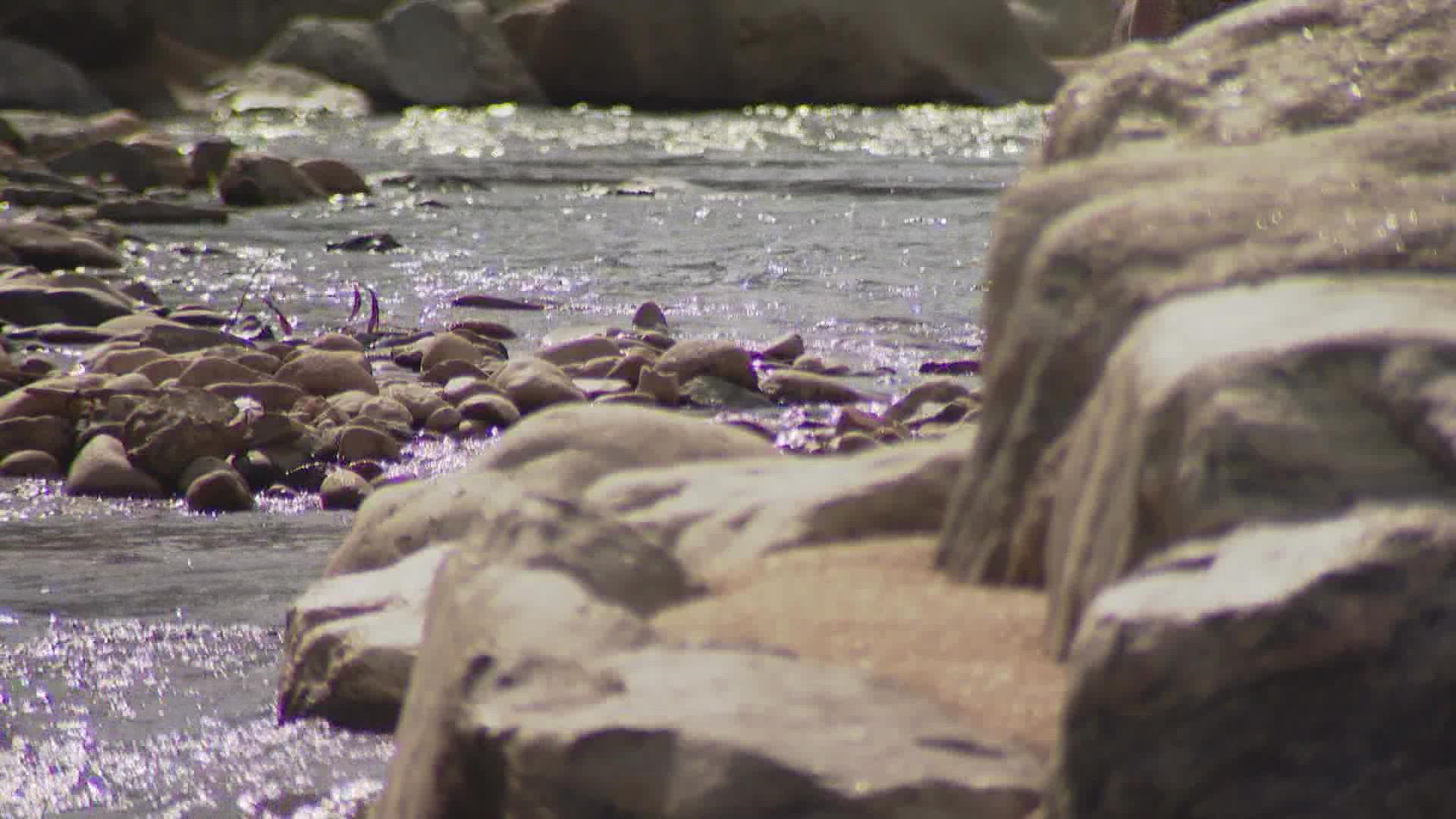LARIMER COUNTY, Colo. — The smoke from the fires is long gone. The lasting impact is now found in the water.
Two years after the biggest wildfires in state history burned through Colorado, the work to repair the damage left on the environment is changing. We’ve been used to seeing helicopters flying over burn scars dropping mulch to help new vegetation grow. Now that's coming to an end.
"Some of the research has shown that aerial mulching isn’t really effective after two years," said Hally Strevey, executive director of the Coalition for the Poudre River Watershed. "That’s kind of our first step, aerial mulching."
Two years ago this week, both the Cameron Peak and East Troublesome fires were burning into Colorado’s record books as the largest fires in history. In the time since the fires groups working to restore the watersheds have focused their restoration efforts on dropping mulch from helicopters to repair the mountainside.
Now the focus is shifting towards repairing smaller areas, streams and other tributaries to major rivers like the Poudre and Big Thompson that were impacted by the fires. Strevey and her team are also planting thousands of Ponderosa Pine trees she said haven’t been able to grow back.
"This year we planted about 10,000 trees in the Cameron Peak Fire burn area and next year we’re hoping to plant close to 13,000 trees," said Strevey. "What scientists are getting concerned about at this point is that Ponderosa Pine is just not going to come back. Our forests are going to continue to burn."
The goal still remains the same: prevent the ash and debris left by the fire from flowing into the rivers and flooding the land. Floods have become a constant in burn scar areas these days. Restoration work tries to fix that, but it’s not easy.
"The real issue with high severity wildfires stems years after the flames are out. It is really tied to that water quality piece," said Strevey. "The issues that we expect to see from the fire won’t end within the next five years. It’ll be kind of ongoing until the watershed is able to recover."
Fall and winter should bring better water quality for places downstream from burn scars. The real trouble comes when we see those summer rain storms washing out all the debris from the mountainside. The burned-out land simply can’t absorb all the rain coming down, which leads to flooding.
SUGGESTED VIDEOS: Wildfires in Colorado

